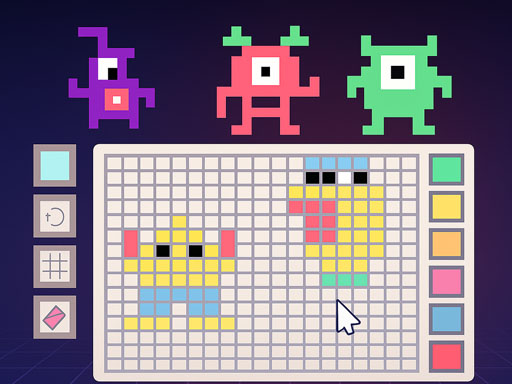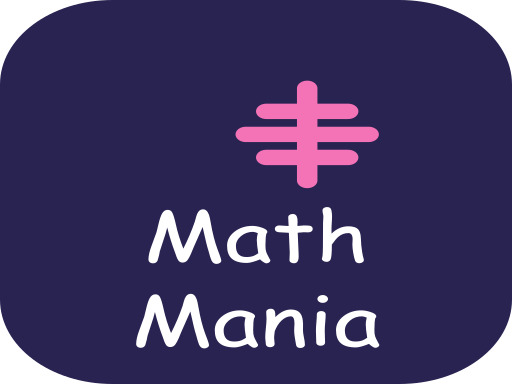X-O Logic: Ultimate Grid Puzzles
About X-O Logic: Ultimate Grid Puzzles
Okay, seriously, you absolutely *have* to hear about this game I just stumbled upon. I mean, I’m still buzzing from a session I had last night, and honestly, I haven’t been this hooked on a puzzle game in ages. It’s called X-O Logic: Ultimate Grid Puzzles, and dude, it’s not just a game, it’s like a mental workout, a zen garden, and a thrilling detective story all rolled into one perfectly designed package.
You know how I’m always on the hunt for those games that just *click*? The ones that grab you from the first few minutes and then slowly, subtly, reveal layers of depth you never saw coming? That’s X-O Logic. When I first saw it, I was like, "Okay, X’s and O’s on a grid, sounds a bit like Tic-Tac-Toe, right?" And yeah, you're placing X's and O's, but trust me, that's where the similarity ends and the real magic begins. This isn't your grandma's casual time-killer; this is a full-on strategic brain-burner that demands your absolute focus and rewards it with some of the most satisfying "aha!" moments I've ever experienced in gaming.
So, picture this: you've got a grid, right? Let's say it's a 6x6 for starters, a nice manageable size. Your goal is to fill every single square with either an X or an O. Sounds simple, but here's where it gets brilliantly devious. First, every row and every column has to have an equal number of X's and O's. So, on a 6x6 grid, that means three X's and three O's in each row and each column. Already, your brain starts doing a little jig, right? But wait, there's more. And this is the rule that truly elevates it: you can never, ever have three of the same symbol in a row, either horizontally or vertically. Never three X's together, never three O's together. Two is fine, but three? Absolutely forbidden.
And that’s it. Those are the rules. Sounds deceptively simple, doesn't it? That's the hook, man. That's the lure. You start placing a few symbols, maybe you see an obvious spot for an X because a row already has two O's and only one X, and you know it needs three. You feel smart, you feel like you're getting it. But then, you place another X, and suddenly you realize you've created a situation where you *have* to place a third X next to it in an adjacent square, or maybe you've blocked off a future move that would have allowed you to fulfill the 'equal numbers' rule for a whole different column. And that's when the game leans in, whispers, "Think ahead, buddy," and gently kicks your strategic ass.
What I love about games like this is that initial feeling of being completely overwhelmed, then slowly, almost miraculously, finding your footing. You start to develop a rhythm. You'll find yourself scanning rows and columns, not just for the obvious placements, but for the *implications* of those placements. "If I put an O here," you'll think, "that means this square *has* to be an X because of the 'no three in a row' rule, and if that's an X, then this other square over here *must* be an O to balance the column." It’s like a cascade of logical deductions, and when you get into that flow state, man, it’s just pure bliss.
There's something magical about watching a grid that initially looks like a jumbled mess slowly, square by square, reveal its inherent, perfect solution. You can almost feel the gears turning in your head, the little "click" as a piece of the puzzle falls into place. And the satisfaction when you finally place that last X or O, and the entire grid lights up, confirming that you've successfully navigated all those intricate rules and made every single deduction correctly? It’s a rush, honestly. It’s that same feeling you get when you finally beat a notoriously difficult boss in an action game, but instead of quick reflexes, it's pure mental muscle that got you there.
In my experience, the best moments come when you're staring at a grid, completely stumped. You've got maybe five or six squares left, and you just can't see the next move. You've checked every row, every column, every potential 'no three in a row' violation, and you're just drawing a blank. You lean back, sigh, maybe grab a drink, and then you come back to it with fresh eyes. And then, *boom*. You spot it. A tiny little pattern, a single square that *has* to be an X because if it were an O, it would break a rule three moves down the line. It's like finding a hidden clue in a detective novel, and once you make that one correct placement, the rest of the solution often unravels before you like a beautiful tapestry.
The brilliant thing about this is how it scales. You start with smaller grids, maybe 4x4 or 6x6, which are fantastic for learning the ropes and getting a feel for the logic. But then, just when you think you've got the hang of it, they throw a 8x8 at you, or even a monstrous 10x10. And suddenly, the complexity skyrockets. The number of possibilities, the potential pitfalls, the sheer mental real estate you have to keep track of – it's exhilarating. You'll find yourself mentally drawing lines, counting X's and O's, visualizing future placements. The grid isn't just a static image; it becomes a dynamic, shifting landscape of possibilities and constraints in your mind.
I've always been drawn to games that demand a certain kind of quiet intensity, where the challenge isn't about speed or reflexes, but about pure, unadulterated thought. X-O Logic delivers that in spades. It’s the kind of game you can pick up for five minutes or lose hours to without even realizing it. I mean, I looked up last night, and what felt like twenty minutes had actually been an hour and a half. My brain felt pleasantly tired, in that good way, like after a really satisfying workout.
What's fascinating is how the game teaches you to see patterns you didn't even know existed. You start to instinctively recognize configurations that lead to trouble, or conversely, configurations that *force* a certain placement. It’s not just about solving individual puzzles; it’s about honing your logical reasoning skills in a way that feels incredibly rewarding. This makes me wonder how much better I'm getting at actual problem-solving in real life, because the mental gymnastics involved here are no joke.
The presentation is clean, crisp, and unobtrusive, which is exactly what you want for a game like this. No flashy distractions, just you and the grid, locked in a battle of wits. The sounds are subtle, just enough to give you feedback without breaking your concentration. You can almost feel the weight of the decision as you tap a square, the slight tension in your shoulders as you meticulously plan your next move. And when you finally complete a particularly tricky puzzle, there’s that little visual flourish, that satisfying confirmation, that just makes you pump your fist in triumph.
Seriously, if you're someone who appreciates the elegance of pure logic, the thrill of strategic planning, and the immense satisfaction of mastering a complex system, you *have* to give X-O Logic a shot. It’s more than just a puzzle game; it’s an intellectual journey, a constant test of foresight and deduction. Just wait until you encounter some of the later challenges – the real magic happens when the grid gets bigger and the solutions become less obvious, forcing you to dig deep and trust your own logical instincts. It’s incredible. You'll be hooked, I promise. Go play it, and let me know when you finally get that first big "I did it!" moment. I guarantee you'll feel it.
You know how I’m always on the hunt for those games that just *click*? The ones that grab you from the first few minutes and then slowly, subtly, reveal layers of depth you never saw coming? That’s X-O Logic. When I first saw it, I was like, "Okay, X’s and O’s on a grid, sounds a bit like Tic-Tac-Toe, right?" And yeah, you're placing X's and O's, but trust me, that's where the similarity ends and the real magic begins. This isn't your grandma's casual time-killer; this is a full-on strategic brain-burner that demands your absolute focus and rewards it with some of the most satisfying "aha!" moments I've ever experienced in gaming.
So, picture this: you've got a grid, right? Let's say it's a 6x6 for starters, a nice manageable size. Your goal is to fill every single square with either an X or an O. Sounds simple, but here's where it gets brilliantly devious. First, every row and every column has to have an equal number of X's and O's. So, on a 6x6 grid, that means three X's and three O's in each row and each column. Already, your brain starts doing a little jig, right? But wait, there's more. And this is the rule that truly elevates it: you can never, ever have three of the same symbol in a row, either horizontally or vertically. Never three X's together, never three O's together. Two is fine, but three? Absolutely forbidden.
And that’s it. Those are the rules. Sounds deceptively simple, doesn't it? That's the hook, man. That's the lure. You start placing a few symbols, maybe you see an obvious spot for an X because a row already has two O's and only one X, and you know it needs three. You feel smart, you feel like you're getting it. But then, you place another X, and suddenly you realize you've created a situation where you *have* to place a third X next to it in an adjacent square, or maybe you've blocked off a future move that would have allowed you to fulfill the 'equal numbers' rule for a whole different column. And that's when the game leans in, whispers, "Think ahead, buddy," and gently kicks your strategic ass.
What I love about games like this is that initial feeling of being completely overwhelmed, then slowly, almost miraculously, finding your footing. You start to develop a rhythm. You'll find yourself scanning rows and columns, not just for the obvious placements, but for the *implications* of those placements. "If I put an O here," you'll think, "that means this square *has* to be an X because of the 'no three in a row' rule, and if that's an X, then this other square over here *must* be an O to balance the column." It’s like a cascade of logical deductions, and when you get into that flow state, man, it’s just pure bliss.
There's something magical about watching a grid that initially looks like a jumbled mess slowly, square by square, reveal its inherent, perfect solution. You can almost feel the gears turning in your head, the little "click" as a piece of the puzzle falls into place. And the satisfaction when you finally place that last X or O, and the entire grid lights up, confirming that you've successfully navigated all those intricate rules and made every single deduction correctly? It’s a rush, honestly. It’s that same feeling you get when you finally beat a notoriously difficult boss in an action game, but instead of quick reflexes, it's pure mental muscle that got you there.
In my experience, the best moments come when you're staring at a grid, completely stumped. You've got maybe five or six squares left, and you just can't see the next move. You've checked every row, every column, every potential 'no three in a row' violation, and you're just drawing a blank. You lean back, sigh, maybe grab a drink, and then you come back to it with fresh eyes. And then, *boom*. You spot it. A tiny little pattern, a single square that *has* to be an X because if it were an O, it would break a rule three moves down the line. It's like finding a hidden clue in a detective novel, and once you make that one correct placement, the rest of the solution often unravels before you like a beautiful tapestry.
The brilliant thing about this is how it scales. You start with smaller grids, maybe 4x4 or 6x6, which are fantastic for learning the ropes and getting a feel for the logic. But then, just when you think you've got the hang of it, they throw a 8x8 at you, or even a monstrous 10x10. And suddenly, the complexity skyrockets. The number of possibilities, the potential pitfalls, the sheer mental real estate you have to keep track of – it's exhilarating. You'll find yourself mentally drawing lines, counting X's and O's, visualizing future placements. The grid isn't just a static image; it becomes a dynamic, shifting landscape of possibilities and constraints in your mind.
I've always been drawn to games that demand a certain kind of quiet intensity, where the challenge isn't about speed or reflexes, but about pure, unadulterated thought. X-O Logic delivers that in spades. It’s the kind of game you can pick up for five minutes or lose hours to without even realizing it. I mean, I looked up last night, and what felt like twenty minutes had actually been an hour and a half. My brain felt pleasantly tired, in that good way, like after a really satisfying workout.
What's fascinating is how the game teaches you to see patterns you didn't even know existed. You start to instinctively recognize configurations that lead to trouble, or conversely, configurations that *force* a certain placement. It’s not just about solving individual puzzles; it’s about honing your logical reasoning skills in a way that feels incredibly rewarding. This makes me wonder how much better I'm getting at actual problem-solving in real life, because the mental gymnastics involved here are no joke.
The presentation is clean, crisp, and unobtrusive, which is exactly what you want for a game like this. No flashy distractions, just you and the grid, locked in a battle of wits. The sounds are subtle, just enough to give you feedback without breaking your concentration. You can almost feel the weight of the decision as you tap a square, the slight tension in your shoulders as you meticulously plan your next move. And when you finally complete a particularly tricky puzzle, there’s that little visual flourish, that satisfying confirmation, that just makes you pump your fist in triumph.
Seriously, if you're someone who appreciates the elegance of pure logic, the thrill of strategic planning, and the immense satisfaction of mastering a complex system, you *have* to give X-O Logic a shot. It’s more than just a puzzle game; it’s an intellectual journey, a constant test of foresight and deduction. Just wait until you encounter some of the later challenges – the real magic happens when the grid gets bigger and the solutions become less obvious, forcing you to dig deep and trust your own logical instincts. It’s incredible. You'll be hooked, I promise. Go play it, and let me know when you finally get that first big "I did it!" moment. I guarantee you'll feel it.
Enjoy playing X-O Logic: Ultimate Grid Puzzles online for free on Midiablog games. This Puzzle game offers amazing gameplay and stunning graphics. No downloads required, play directly in your browser!
How to Play
Desktop Use mouse to click on empty squares to place your symbol Mobile Touch empty squares to place X or O Accessibility Include keyboard controls when possible





Comments
This game is awesome! I love the graphics and gameplay.
One of the best games I've played recently. Highly recommended!